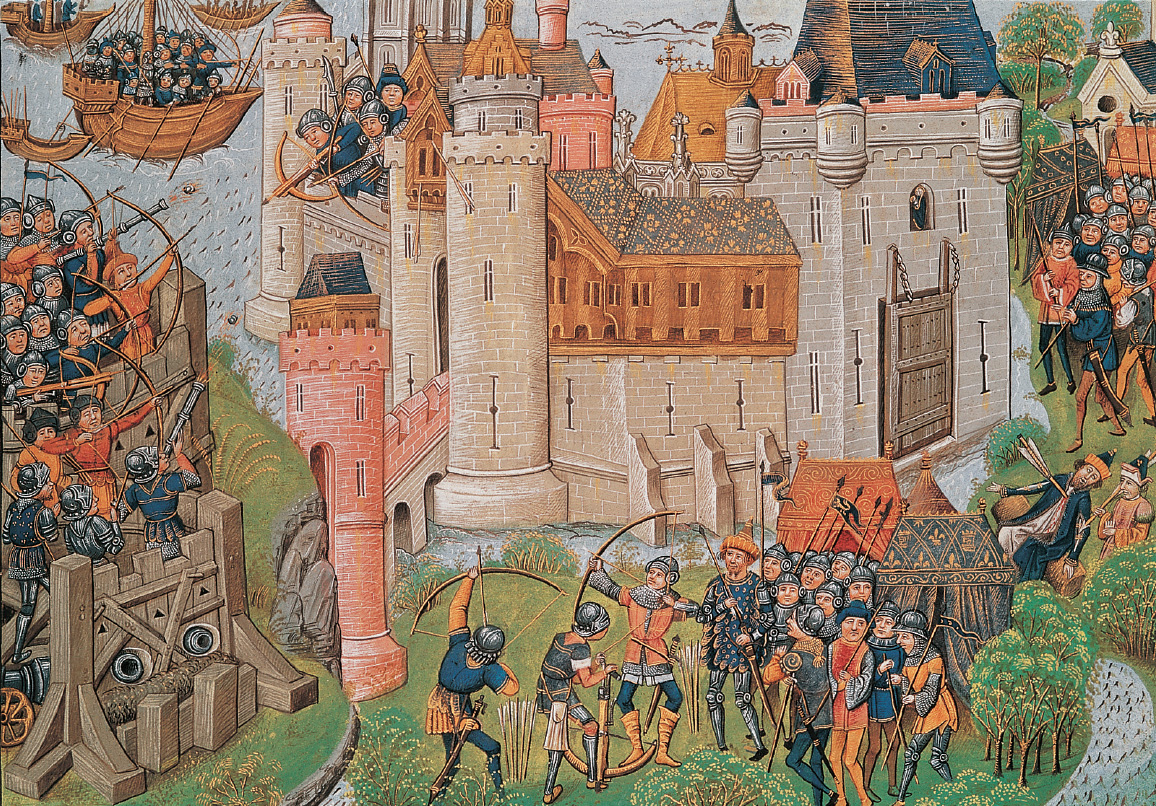Joan of Arc and France’s Victory

The ultimate French success rests heavily on the actions of Joan, an obscure French peasant girl whose vision and military leadership revived French fortunes and led to victory. (Over the centuries, she acquired the name “of Arc” — d’Arc in French — based on her father’s name; she never used this name for herself, but called herself “the maiden” — la Pucelle in French.) Born in 1412 to well-to-do peasants in the village of Domrémy in Champagne, Joan grew up in a religious household. During adolescence she began to hear voices, which she later said belonged to Saint Michael, Saint Catherine, and Saint Margaret. In 1428 these voices spoke to her with great urgency, telling her that the dauphin (DOH-fuhn), the uncrowned King Charles VII, had to be crowned and the English expelled from France. Joan traveled to the French court wearing male clothing. She had an audience with Charles, who had her questioned about her angelic visions and examined to make sure she was the virgin she said she was. She secured his support to travel with the French army to Orléans dressed as a knight — with borrowed armor and sword. There she dictated a letter to the English ordering them to surrender:
King of England …, do right in the King of Heaven’s sight. Surrender to The Maid sent hither by God the King of Heaven, the keys of all the good towns you have taken and laid waste in France. She comes in God’s name to establish the Blood Royal, ready to make peace if you agree to abandon France and repay what you have taken. And you, archers, comrades in arms, gentles and others, who are before the town of Orléans, retire in God’s name to your own country.6
Such words coming from a teenage girl — even one inspired by God — were laughable given the recent course of the conflict, but Joan was amazingly successful. She inspired and led French attacks, forcing the English to retreat from Orléans. The king made Joan co-commander of the entire army, and she led it to a string of victories; other cities simply surrendered without a fight and returned their allegiance to France. In July 1429, two months after the end of the siege of Orléans, Charles VII was crowned king at Reims.
Joan and the French army continued their fight against the English and their Burgundian allies. In 1430 the Burgundians captured Joan. Charles refused to ransom her, and she was sold to the English. A church court headed by a pro-English bishop tried her for heresy, and though nothing she had done was heretical by church doctrine, she was found guilty and burned at the stake in the marketplace at Rouen. (See “Primary Source 11.2: The Trial of Joan of Arc.”)
The French army continued its victories without her. Sensing a shift in the balance of power, the Burgundians switched their allegiance to the French, who reconquered Normandy and, finally, ejected the English from Aquitaine in the 1440s. As the war dragged on, loss of life mounted, and money appeared to be flowing into a bottomless pit, demands for an end increased in England. Parliamentary opposition to additional war grants stiffened, fewer soldiers were sent, and more territory passed into French hands. At the war’s end in 1453, only the town of Calais (KA-lay) remained in English hands.
What of Joan? A new trial in 1456 — requested by Charles VII, who either had second thoughts about his abandonment of Joan or did not wish to be associated with a condemned heretic — was held by the pope. It cleared her of all charges and declared her a martyr. She became a political symbol of France from that point on, and sometimes also a symbol of the Catholic Church in opposition to the government of France. In 1920, for example, she was canonized as a saint shortly after the French government declared separation of church and state in France. Similarly, Joan has been (and continues to be) a symbol of deep religious piety to some, of conservative nationalism to others, and of gender-bending cross-dressing to others. Beneath the pious and popular legends is a teenage girl who saved the French monarchy, the embodiment of France.
